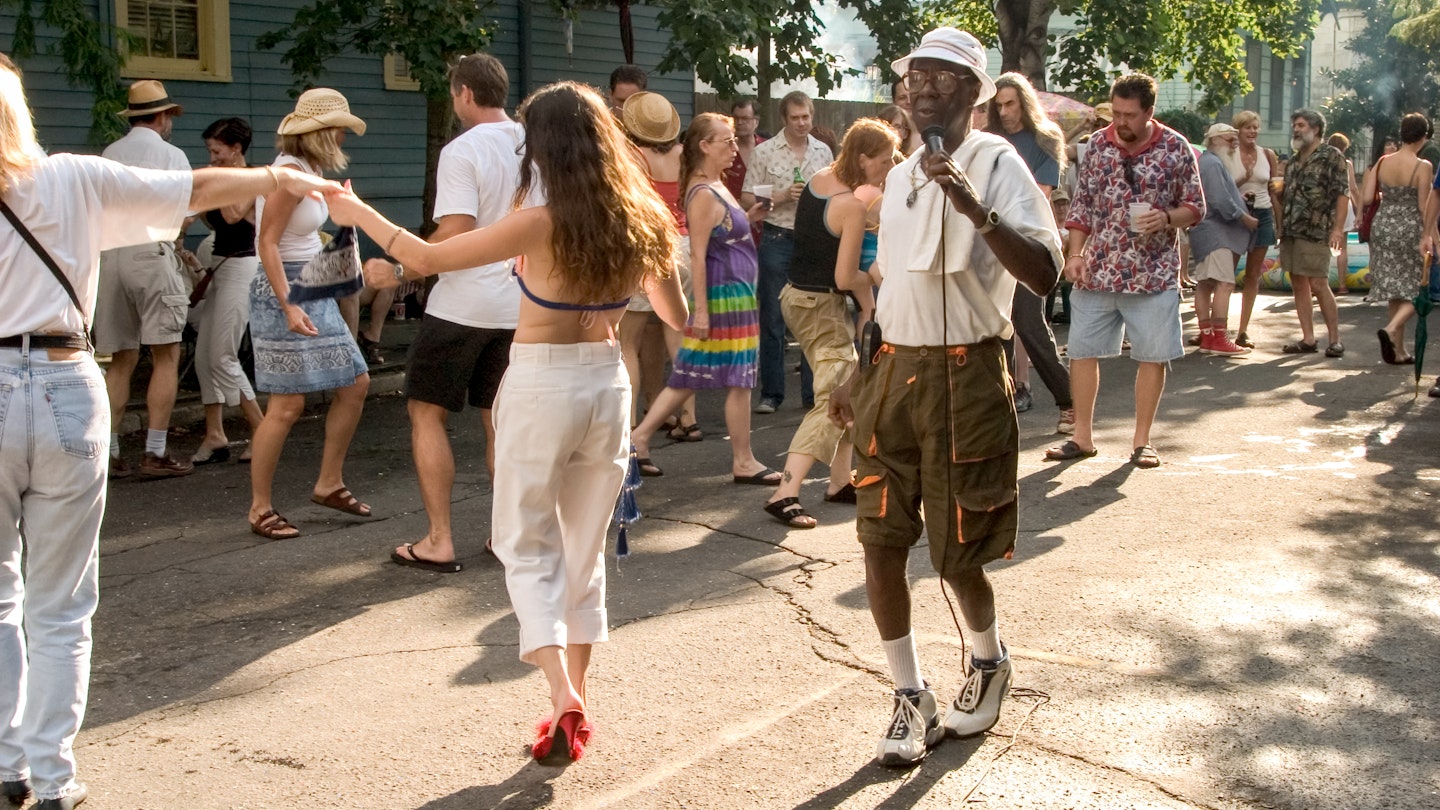The Transformation of Bywater: A New Orleans Community
In a New Orleans neighborhood popular with tourists, a familiar question arises: what responsibility do visitors have to the communities they visit?
It’s 6:30 AM on a Monday and I’m in the back of an Uber driving through the Bywater neighborhood of New Orleans on my way to the airport. The windows are down, welcoming a springtime breeze infused with the sweet fragrance of jasmine vines and the shrill caw of a nearby rooster. The sunlight glistens on long, slim Creole-style “shotgun homes” painted in vibrant colors of green, orange, yellow, blue, purple, and red.
A decade ago, I purchased my own Bywater home, and on this perfect morning, I’m very content with my decision. Meanwhile, my Uber driver, a 50-something-year-old Black man, seems to have a different perspective.
“Look at this,” he says under his breath, as we wait at a stoplight, across from a group of young women loading their suitcases into cars. Anyone familiar with the neighborhood recognizes this increasingly common sight: a girls’ trip heading home after an unforgettable weekend in town.
“You’re not used to seeing tourists down here?” I ask, but I already know the answer. Ten years ago, it was rare. A generation ago, it was unheard of.
Gutting the City
Of course, it’s not just New Orleans that’s transforming—cities around the globe are undergoing similar changes. Although research shows tourism plays an essential role, much of the transformation in historic neighborhoods like Bywater cannot be solely attributed to tourists. Affluent residents are moving into city centers en masse for the first time in generations.
The newcomers have renovated their homes in bright, Instagram-friendly colors, advocated for and secured an expansive riverfront park, and created businesses that were unimaginable along the neighborhood’s commercial corridors just a generation ago. St. Claude Avenue now hosts a variety of establishments from small-batch jam companies to vibrant art markets. However, these new amenities and attractions are collectively driving up rent, leading to the displacement of poor and working-class Black families.
Many families had resided in the neighborhood since the mid-20th century, moving in as the white middle class fled to the suburbs, draining the tax base, which over decades crippled essential services like schools and businesses.
Revitalization or Gentrification?
The community spirit that once defined Bywater is increasingly hard to maintain. Contributing factors include the devastation caused by Hurricane Katrina in 2005, which severely damaged countless homes, thereby shrinking the housing supply and increasing rent prices.
Young professionals from around the country, myself included, arrived in the wake of the hurricane to help rebuild. We fell in love with the uniqueness and relative affordability of the city, purchasing homes in neighborhoods where prices were low, and making renovations. Consequently, Bywater became a primary destination for these newcomers, leading to the emergence of new businesses catering to an evolving demographic.
These changes can be labeled as either “revitalization” or “gentrification,” depending on one’s perspective. Regardless of title, the effects are undeniable.
In the decade since, many of the neighborhood’s famous “shotgun double” duplexes have been transformed into more spacious single-family homes. With the rise of short-term rental opportunities such as Airbnbs, dozens of remaining units in the neighborhood have been repurposed for tourists, driving up costs for local residents.
However, if you visit local establishments, you can still experience the essence of what makes Bywater remarkable. For instance, Bywater Bakery acts as a community center, where neighbors gather around takeout windows in the morning. Local artists adorn the walls, and musicians often perform outside, bridging locals and visitors alike.
Short-Term Rentals, Long-Term Problems
According to data from Inside Airbnb, New Orleans has thousands of short-term rental listings available. While these units contribute to the local economy, they simultaneously exacerbate the ongoing housing crisis by driving up rental prices across the board.
As the allure of short-term rentals continues, many residents struggle to find places they can afford, especially in high-demand neighborhoods like Bywater, all while nearly 30,000 families wait for affordable housing through the local authority.
Neighborhood Institutions
Many desirable neighborhood features also contribute to heightened living costs. Bywater institutions like Bacchanal have become increasingly popular not just with locals but with tourists too. As its patronage grows, it becomes more challenging for residents to secure a spot, especially on weekends.
No Quick Fix
The complexities surrounding short-term rentals, tourism, and gentrification prove difficult. Each change brings with it both benefits and challenges. Experts suggest that while tourism can invigorate neighborhoods, it is vital to act responsibly and be mindful of the potential impact on local communities.
In New Orleans, the City Council has begun to address these challenges with regulations aimed at limiting short-term rentals and ensuring that fees contribute to affordable housing initiatives. Local sentiments emphasize the shared desire for mutual respect between visitors and residents.
As the Bywater community navigates these significant changes, it serves as a reminder of the delicate balance between tourism and community health. The responsibility lies with both visitors and locals to ensure cultural integrity and housing stability.
“I hope people make informed decisions that positively affect those who live here,” a local resident articulated, underscoring the need for awareness of the impact tourism has on neighborhoods.





